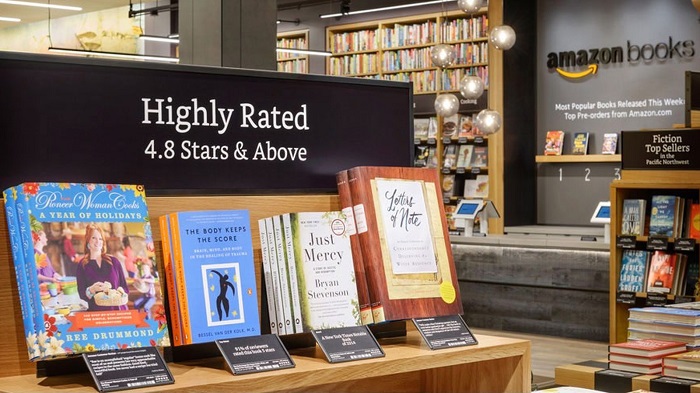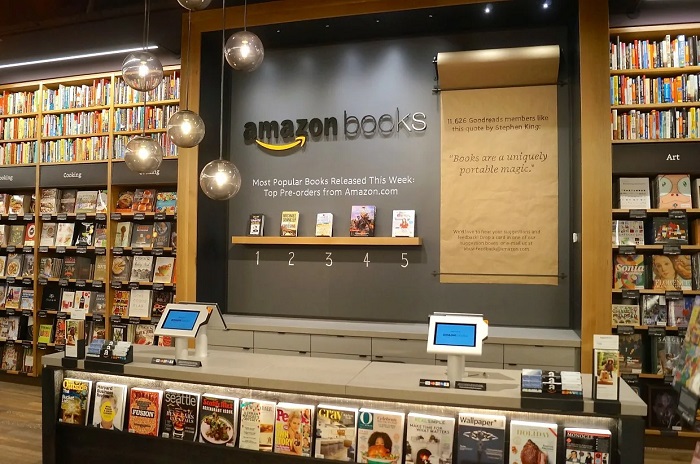In today’s digital world, Amazon has become the largest book marketplace globally. From self-published authors to major publishing houses, nearly everyone now sells their books on Amazon. With millions of books listed, standing out has become harder than ever. This blog explains why understanding Amazon’s system matters, especially in terms of title appearance and performance.
Book titles are no longer just creative choices. On Amazon, they directly affect how easily readers find your book and whether they decide to click. The title plays a key role in Amazon’s search results, showing your book when people type related words. Strong titles help boost clicks, sales, and even long-term success.
Amazon’s shift from its older A9 algorithm to the new A10 system in 2025 has changed the rules. Now, book metadata – especially your title – is more important for discoverability than before. This guide shows you exactly how to title your book for Amazon, focusing on visibility, keyword relevance, and higher click-through rates. By the end of this guide, you’ll understand how to adapt to Amazon algorithm changes and help more people discover your book.
Understanding Amazon’s Book Search Algorithm in 2025
Amazon’s old system, called A9, mostly showed books based on simple things: what words you used in your title, how fast your book sold, and how many people bought after seeing it. Amazon’s new system, called A10, works in a smarter way, reflecting recent book marketing trends focused on reader behavior.
Do they click your book? Do they stay on your page? Does your title actually match what people are searching for? These things matter more than just filling your title with many keywords. Amazon now rewards books that feel natural, relevant, and clear.
Your book title plays a huge role in how easy it is for people to find your book. Amazon reads your title to decide where and when to show your book to shoppers. Long, confusing, or keyword-packed titles don’t work anymore—they might even hurt your chances.
Simple, clear titles now matter more, making it vital to know how to adapt to Amazon algorithm changes. Tools like Amazon KDP help you manage your title and keywords. Publisher Rocket shows what types of titles successful books currently use.
Key Components of a Title That Ranks Well on Amazon

Think of your book title like a movie trailer’s first few seconds. Just like viewers decide whether to keep watching a film, readers judge your book based on its title alone. One of the most basic book advertising ideas is simply making sure your title clearly tells readers what to expect.
If your title feels vague, both readers and Amazon’s system might skip over it. For instance, calling a book “Whispers” doesn’t tell much. But “Whispers in the Wind: A Historical Romance Novel” immediately signals the genre and mood. Being clear is now a must—not just for people, but also for Amazon’s search system.
People no longer search aimlessly. They type specific phrases like “gritty crime thriller” or “clean romance novel.” Targeted help from Christian book marketing services ensures your title speaks clearly to faith-based readers. Your title or subtitle should help Amazon match your book to these searches.
Here’s how to do it wisely:
- Keep your main title short and clear.
- Use long keyword phrases in the subtitle.
- Example: “A Practical Guide for First-Time Homeowners.”
In short, your title now works like a guidepost—helping readers and Amazon both understand your book quickly and clearly.
Best Practices for Optimizing Book Titles in 2025

Creating a strong title is now a key part of book marketing strategies, not just design. A creative or mysterious title might sound nice, but if it doesn’t explain your book clearly, people will scroll past without clicking or buying. Readers are busy. Your title should mix emotional words with clear, helpful terms that tell people what they’re getting. This way, your book feels interesting but also easy to find.
Subtitles help Amazon and your readers understand your book better. Learning how to adapt to Amazon algorithm changes in 2025 means using subtitles wisely. Amazon allows them, especially for nonfiction. Subtitles give you extra space to explain your book better. For example, if your title is Quiet Strength, adding something like A Christian Man’s Guide to Overcoming Adversity helps Amazon show your book in the right searches and find your readers.
Amazon now keeps a close eye on titles that try to mislead readers. Don’t use names of popular books or authors just to get clicks. Avoid all capital letters, weird punctuation, or random words that don’t really fit your book. These mistakes can make Amazon show your book less often. Using KDP’s Bookshelf, you can test different title versions before publishing. Watch your click-through rates (CTR) in reports to see which title works better for your audience.
Engaging Readers in 2025 Through Smarter Title Strategies
Learning how to recover from an algorithm change means simplifying your title to meet actual reader searches. If someone’s looking for a “dark fantasy adventure” or a “simple recipe guide,” your title must feel like the answer to their search. For niche genres, like kids’ books, using children’s book marketing services helps tailor your title to parents’ searches.
What many authors miss is the power of testing titles before publishing. Posting your title ideas on social media, like TikTok, Instagram polls, or in newsletters, lets real readers pick their favorite. Many authors who listened to feedback saw more preorders and better engagement after changing their titles.
Quick Testing Ideas:
- Post title options in Instagram Stories and gather votes.
- Share title tests in TikTok BookTok videos for fast reactions.
- Use Reddit writing groups for honest reader opinions.
- Ask loyal readers in email lists which title draws them in.
Platforms like Goodreads forums can also help you gather useful, no-cost feedback from your target audience.
Modern Book Marketing Ideas Tied to Your Title

Using the best book marketing tools helps your title reach the right readers through automated suggestions. Apps like StoryGraph, BookBub, and BookSirens track reader habits and recommend books accordingly. One of the simplest book advertising ideas is ensuring your title clearly explains your book’s content.
These platforms analyze your title to understand what your book offers and who will enjoy it. If your title includes strong, clear keywords, it’s much easier for these systems to recommend your book without needing extra paid promotions or complicated strategies from you as the author.
A good title also helps in video marketing. If you’re creating a TikTok video, YouTube post, or book trailer, your title is usually the first thing people notice. Authors who want to learn how to recover from algorithm change should keep video titles simple and include important keywords people are searching for.
A simple, strong title makes your video feel more professional and easier to understand. If your title uses words people already search for—and you repeat those words in captions or voiceovers—your video and your book both have a better chance of appearing in searches.
Using Data to Test and Improve Your Book Title
See how people respond to your book title. If you change it, watch your sales, clicks, and how many people actually buy your book after seeing the new title. These simple numbers show if your title is working or not. Amazon also offers A/B testing through its KDP tools, where you can try two different titles and see which one gets more attention. Testing two title versions shows how to recover from algorithm change when your sales drop after an Amazon update.
Beyond Amazon, there are other advanced book marketing tools that help refine your title:
- Publisher Rocket: Discover keyword popularity and competition.
- BookBeam: Score your title and track trends.
- Google Trends: See what readers search for outside Amazon.
- Facebook Landing Pages: Run mini-ads to see which title gets better clicks.
- BookFunnel: Collect opt-in rates for different title versions.
Common Mistakes to Avoid When Optimizing Book Titles
One big mistake is overloading your title with too many keywords or using titles that feel like clickbait. Amazon now picks up on this and can reduce how often your book shows up. Simple titles work better, especially if you’re exploring book advertising ideas through organic methods. Keep your title simple, natural, and clear. Using too many commas, random words, or trying to trick readers can hurt your chances of getting found.
A common mistake is choosing a title that doesn’t fit your book’s style or type. Your title, cover, and description should match each other. If your title feels serious but your cover looks fun, people might get confused and skip your book. Keep everything consistent. Professional eBook marketing services often help authors avoid overstuffed or unclear titles.
Many authors also forget that their title should work on more than just Amazon. Knowing how to increase book visibility on Amazon means making a clear title that also works on Google, Goodreads, YouTube, and TikTok. Keep your title short and simple. Use the same title everywhere so people can easily find and recognize your book. This helps your book stay visible and easy to recognize everywhere.
Best Platforms to Support Your Title Strategy in 2025

Consistent titles across platforms help improve results from your book marketing campaigns, especially on Amazon Ads. Knowing where to focus your title-related marketing can make a real difference.
For paid promotion, your title should work alongside your ads:
- Amazon Ads (Sponsored + Lockscreen Ads): Integrate your title into ad copy for stronger results.
- BookBub Ads: Target readers of similar titles and A/B test your title.
- Facebook/Instagram Ads: Use ad creatives to test alternative title phrasings.
For organic reach, social media and content creation help push your title:
- On TikTok BookTok, repeat your title in hashtags and spoken content.
- On YouTube Shorts, hook viewers with lines like, “If you liked [Title], read this…”
- Use SEO blogs on Medium or Substack to write content using your title’s keywords.
Pro Tip: If you’re figuring out how to adapt to Amazon algorithm changes, combine data from Amazon Ads with audience polls.
Conclusion
In 2025, understanding how to increase book visibility on Amazon starts with your title. It’s not just a name anymore—it’s your first and most important marketing tool. Amazon’s A10 system now shows books that clearly match what people search and how they behave, so your title needs to be simple, clear, and easy to understand.
A good title helps your book show up in search results and makes people curious to click. The best way to do this is by mixing helpful words with emotional ones. But picking your title isn’t a one-time job. Keep testing, check your results, and listen to real reader feedback. Treat your title like your first marketing campaign—start with simple data, choose the right words, and keep improving it to help readers find your book easily.
Frequently Asked Questions
The key difference between paid ads vs. organic marketing lies in cost and speed. Paid ads, such as Facebook or Amazon campaigns, offer quick visibility and targeted reach but require a budget. Organic marketing, like social media engagement or blogging, builds long-term relationships without direct spending. In 2025, a hybrid strategy is ideal—paid ads help launch your book, while organic efforts build sustained audience trust and credibility.
Yes, paid book marketing can be highly effective for new authors—if done strategically. With precise targeting, paid promotions on platforms like Amazon, Facebook, or BookBub can significantly boost your book’s exposure and early reviews. However, it's vital to set a realistic budget, track ROI, and combine it with organic efforts to build lasting author visibility in 2025.
To make paid book promotion work efficiently, start with a small budget and A/B test your ads. Use clear targeting (genre, demographics, reader interests), and optimize your landing page or Amazon book description. Monitor metrics like click-through rates and conversion rates weekly. Pair ads with strong organic efforts email lists or blogs for better returns in 2025.
To promote your book with ads affordably, start with Amazon Ads or Facebook Ads using a $5–$10 daily limit. Focus on niche targeting—readers already interested in your genre or topic. Use compelling ad copy and test different visuals. Combine this with organic promotion like social posts or newsletter outreach to stretch your budget in 2025.





